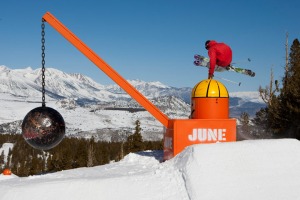Louisville's Peyton Siva, left, and Chane Behanan, celebrate following their 85-63 win over Duke in the Midwest Regional final in the NCAA college basketball tournament, Sunday, March 31, 2013, in Indianapolis. Behanan was wearing the jersey of teammate Kevin Ware (5) who was injured during the game. (AP Photo/Darron Cummings)
Louisville's Peyton Siva, left, and Chane Behanan, celebrate following their 85-63 win over Duke in the Midwest Regional final in the NCAA college basketball tournament, Sunday, March 31, 2013, in Indianapolis. Behanan was wearing the jersey of teammate Kevin Ware (5) who was injured during the game. (AP Photo/Darron Cummings)
Louisville players huddle as guard Kevin Ware is treated for an injury during the first half of the Midwest Regional final against Duke in the NCAA college basketball tournament, Sunday, March 31, 2013, in Indianapolis. (AP Photo/Michael Conroy)
Louisville players celebrate following their 85-63 win over Duke in the Midwest Regional final in the NCAA college basketball tournament, Sunday, March 31, 2013, in Indianapolis. (AP Photo/Michael Conroy)
Louisville forward Montrezl Harrell (24) blocks a shot by Duke forward Mason Plumlee during the first half of the Midwest Regional final in the NCAA college basketball tournament, Sunday, March 31, 2013, in Indianapolis. (AP Photo/Darron Cummings)
Louisville guard Peyton Siva (3) goes up with a shot against Duke guard Quinn Cook (2) during the first half of the Midwest Regional final in the NCAA college basketball tournament, Sunday, March 31, 2013, in Indianapolis. (AP Photo/Michael Conroy)
INDIANAPOLIS (AP) ? Crying and shaken by the sight of Kevin Ware writhing on the court, his right leg splintered, Rick Pitino and his Louisville players had no idea how they were going to pull it together with a half still left to play and a Final Four berth on the line.
Ware showed them the way.
"I don't think we could have gathered ourselves ? I know I couldn't have ? if Kevin didn't say over and over again, 'Just go win the game,'" Pitino said. "I don't think we could have gone in the locker room with a loss after seeing that. We had to gather ourselves. We couldn't lose this game for him.
"We just couldn't."
With Russ Smith, Peyton Siva and Gorgui Dieng leading the way, the Cardinals finally shook off their grief early in the second half, erupting for a 13-2 run that Duke was powerless to answer. The 85-63 victory clinched a second straight trip to the Final Four for the top-seeded Cardinals, who are determined to win it all for Ware, a New York City native who moved to the Atlanta area for high school.
The Cardinals (33-5) will play Wichita State in the national semifinals next Saturday. The ninth-seeded Shockers (30-8) added to their streak of upsets with a 70-66 victory over Ohio State on Saturday night.
As the final seconds ticked down, Ware's best friend on the team, Chane Behanan, put on the guard's No. 5 jersey and stood at the end of the bench, screaming. Cardinals fans chanted "Kevin Ware! Kevin Ware!"
"We talked about it every timeout, 'Get Kevin home,'" Pitino said.
Smith finished with 23 points and earned Most Outstanding Player honors for the Midwest Region. Siva added 16 while Dieng had 14 points and 11 rebounds.
Mason Plumlee had 17 points and 12 rebounds for Duke. But the Blue Devils (30-6) couldn't overcome a poor start by Seth Curry, who scored all 12 of his points in the second half, or their foul trouble.
"I thought we had a chance there, and then, boom," coach Mike Krzyzewski said. "That's what they do to teams. They can boom you."
This was the first time Pitino and Krzyzewski had met in the regional finals since that 1992 classic that ended with Christian Laettner's improbable buzzer-beater, a game now considered one of the best in NCAA tournament history.
This game will be remembered, too, but for a very different ? and much more somber ? reason.
With 6:33 left in the first half, Ware, who has played a key role in Louisville's 14-game winning streak, jumped to try and block Tyler Thornton's 3-point shot. When he landed, Ware's right leg snapped midway between his ankle and knee, the bone skewing almost at a right angle. Ware dropped to the floor right in front of the Louisville bench and, almost in unison, his teammates turned away in horror. Thornton grimaced, putting his hand to his mouth as he turned around.
"I heard it and then I seen what happened, (the bone) come out," Smith said. "I immediately just, like, fell. I almost didn't feel nothing."
Pitino went to help Ware up and then saw the leg, which broke in two places.
"I literally almost threw up," Pitino said, his voice catching. "Then I just wanted to get a towel to get it over that. But all the players came over and saw it."
Louisville forward Wayne Blackshear fell to the floor and Behanan looked as if he was going to be sick on the court, kneeling on his hands and feet. Luke Hancock patted Ware's chest as doctors worked on the sophomore and Smith walked away, pulling his jersey over his eyes. The arena was silent, and several fans wept and bowed their heads.
Pitino had tears in his eyes as he tried to console his players. Dieng draped an arm around the shoulders of Smith, who repeatedly wiped at his eyes and shook his head.
"It was really hard for me to pull myself together," Smith said. "I didn't ever think in a million years I would ever see something like that. And that it happened, especially, to a guy like Kevin Ware, I was completely devastated."
As the Cardinals (33-5) gathered at halfcourt to try and regroup before play resumed, Pitino called them over to the sideline, saying Ware wanted to talk to them before he left.
"Basically, the bone popped out of the skin. It broke in two spots," Pitino said. "Remember the bone is six inches out of his leg, and all he's yelling is 'Win the game, win the game.' I've never seen anything like that."
Added Siva, "He told us countless times: 'Just go win this game for me. Just go win this game. Don't worry about me, I'm fine. Just go win this game.' I don't know how he did it. I don't know how he got strength to do it, but he told us to go out there and win."
News of the injury dominated social media. Joe Theismann, whose NFL career ended with a horrific broken leg, said on Twitter, "Watching Duke/ Louisville my heart goes out to Kevin Ware."
Pitino wiped away tears as Ware, whom Smith described as the Cardinals' "little brother" was wheeled off the court. Surgeons reset his leg and inserted a rod in his right tibia during a 2-hour operation at Methodist Hospital. Ware is expected to remain in Indianapolis until at least Tuesday, and Pitino said he, his son Richard and the Cardinals' equipment manager planned to visit the player later Sunday night and again Monday morning.
"He'll come back," Pitino said. "We'll get Kevin back as good as new."
But when play resumed, it was clear the Cardinals' minds were elsewhere. They missed four of their next five shots along with two free throws, and were uncharacteristically sloppy. But they regrouped after a timeout, with Smith's finger roll sparking a 12-6 run to finish the half that gave them a 35-32 lead.
Smith picked up where he left off at the start of the second half, making all three free throws after being fouled on a 3-point attempt to give Louisville a 38-32 lead, its largest of the game to that point.
But just as he did against Michigan State, Curry got hot after halftime, making two 3s in the first three minutes. A Plumlee dunk tied the game at 42.
That, however, was all Louisville needed.
Clawing for every rebound, diving on the floor for loose balls and cranking the intensity up even higher on their ferocious defense, the Cardinals were not going to lose.
And everyone, Duke included, knew it.
This was only the second time the Blue Devils have reached the regional finals and failed to make it to the Final Four. The only other time? In 1998, when the Blue Devils lost to eventual national champion Kentucky.
"We got beat by a better team," Krzyzewski said.
Smith made a layup. Siva had a nice jumper at the top of the key, and then followed with a layup. Just like that, Louisville was off. Siva had seven points during the run, which was only halted by a timeout. But Dieng kept it rolling with a jumper and a tip-in. After Plumlee made a pair of free throws, Hancock made a 3 and the roof of the Lucas Oil Stadium nearly blew off.
"When Kevin went down, it was devastating for all of us," Siva said. "We just came together and Kevin Ware really was the reason why we pulled this game out.
"Everybody on the team just wanted to step up for him. For us to show that focus and that determination, we just tried to do it for him."
Associated Pressmadonna super bowl halftime kelly clarkson super bowl giants super bowl 2012 half time show halftime show 2012 kelly clarkson super bowl 2012 ok go







 We stopped for a water break and views on the Chalet?s deck and Nidiver reminisced about riding the lift, taking in the views, having a tasty meal- ?the food was excellent up here? and then venturing out of bounds. Locals had long whined for a backcountry lift where they could pay a reduced rate for lift-accessed OB but that had never happened.
We stopped for a water break and views on the Chalet?s deck and Nidiver reminisced about riding the lift, taking in the views, having a tasty meal- ?the food was excellent up here? and then venturing out of bounds. Locals had long whined for a backcountry lift where they could pay a reduced rate for lift-accessed OB but that had never happened.

 The My New Zealand Story series from Scholastic New Zealand introduces children to different events and periods of New Zealand?s history.? I love this series because it gives a snapshot of the life of a fictional character (based on real people) and how they cope with life in the goldfields, or in colonial New Zealand, or how they react to a disaster like the Napier Earthquake.? These books also highlight how different the lives of the characters is to the lives of children today.? They really bring history alive for young readers and connect them with the history of their country.? The latest in the series is Cyclone Bola by Kath Beattie and my school librarian friend, Desna, has a book in the series coming out next year.
The My New Zealand Story series from Scholastic New Zealand introduces children to different events and periods of New Zealand?s history.? I love this series because it gives a snapshot of the life of a fictional character (based on real people) and how they cope with life in the goldfields, or in colonial New Zealand, or how they react to a disaster like the Napier Earthquake.? These books also highlight how different the lives of the characters is to the lives of children today.? They really bring history alive for young readers and connect them with the history of their country.? The latest in the series is Cyclone Bola by Kath Beattie and my school librarian friend, Desna, has a book in the series coming out next year. Barbara Else?s Tales of Fontania series is a fantasy series that stands out from the crowd.? Barbara has an incredible imagination and her world and characters jump off the page.? Her tales are full of adventure, danger, royalty, spies, flying trains, a floating restaurant, stinky trolls, poisonous toads and much, much more.? You never know what who or what you?re going to meet next.? Thanks to the stunning covers by Sam Broad the books jump off the shelf and grab your attention.? I have it on good authority that there are more Tales of Fontania to come too.
Barbara Else?s Tales of Fontania series is a fantasy series that stands out from the crowd.? Barbara has an incredible imagination and her world and characters jump off the page.? Her tales are full of adventure, danger, royalty, spies, flying trains, a floating restaurant, stinky trolls, poisonous toads and much, much more.? You never know what who or what you?re going to meet next.? Thanks to the stunning covers by Sam Broad the books jump off the shelf and grab your attention.? I have it on good authority that there are more Tales of Fontania to come too.